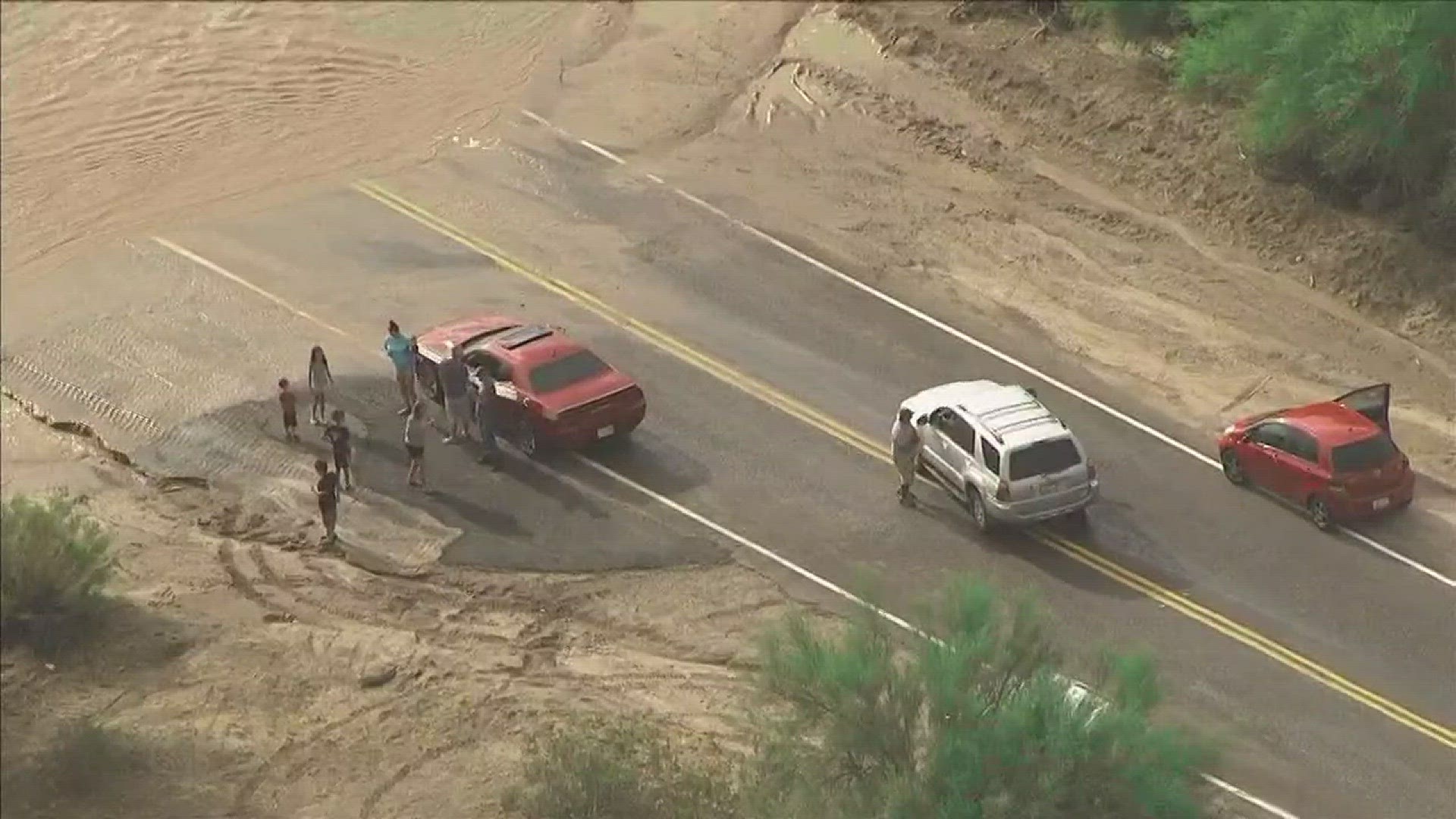FLAGSTAFF, Ariz. – Outdoor recreation near creeks and rivers in Arizona are a great option to enjoy the sunshine while cooling down, but can be dangerous because of the potential for flash flooding.
The tragic death of 10 family members in mid-July near the Cold Springs swimming hole north of Payson left many wondering what they would do in a similar situation.
12 News spoke with Deputy Paul Clifton with the Coconino County Sheriff’s Office to get these 10 flash flood survival tips.
Clifton said the best way to survive a flash flood is:
1. Prevention
He said before heading out, it’s important to check flood history, fire history and weather.
“Not only where you’re planning on going, but also upstream,” Clifton said.
2. Pay attention
Take mental note of what’s around you as you make your way down to the water.
“Sort of a situational awareness, so that should something happen, you can develop a plan to get out of harm’s way,” Clifton said.
3. Avoid canyons, waterfalls and swimming holes
“I’m looking at that and I’m saying it’s going to really be hard to get out,” Clifton said. He explained those areas could be filled with traps made worse by the force of nature.
4. Find a nice beach
You’ll be safer relaxing here than near piles of debris that can trap you.
“What you’re looking for maybe is just like a beach or more flat area, something with a gradual incline,” the deputy said.
5. Keep your eyes and ears open for signs a flash flood is headed your way
These include rumbling, changes in what is floating in the water and in its speed, level and color.
“Burned areas, it would be grey and clay areas, like in Sedona, it could be more that reddish burnt orange-type coloration, but you’ll start seeing that murkiness,” Clifton explained.
If you see these or hear the roar of water coming toward you.
6. Get to high ground immediately
Get above water lines on rocks and large debris piles. When you’re high enough, signal for help, but ...
7. Don’t cross moving water
“There could be boulders rolling underneath that,” Clifton said.
If you are caught in a flood,
8. Don’t panic
9. Get into a reclined position
Point your feet downstream, using them as a barrier between you and what you may encounter.
“Then that allows you to keep your head up a little bit see what’s going on,” Clifton said, adding, “It’s also a good way to feel for the ground if the water is getting shallow and if you can touch it, then that might be a point to get out.”
10. Don’t immediately reach for a branch
Debri piles can be strainers or traps. Your instinct may be to jump on a trunk or grab hold of a branch, but the force of the water can pin you up against a strainer.
“Or even worse --pull you under,” Clifton said.
Instead, try to move toward a slower current or beach. There, you are more likely to safely get out or be rescued.
Deputy Clifton said you shouldn’t rely on your cell phone or even your satellite messenger to be located because you may not have a good enough signal, so it’s important to always tell someone not in your group where you’re going, how many people are in your party and what time you expect to return home in case you do go missing.

